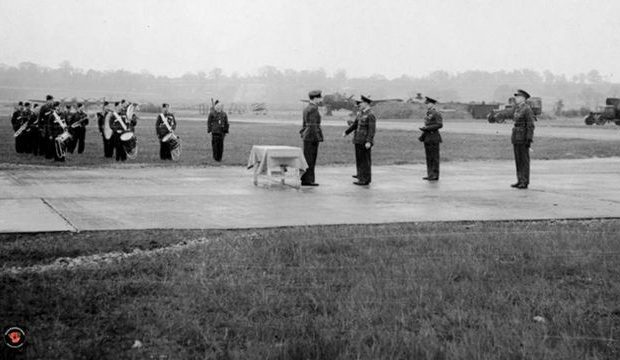BARRY’S BAY – On August 18, a legend passed on.
Known to his friends as ‘Paddy’, Kazimierz J. Szrajer, a long-time resident of the Barry’s Bay area and World War II pilot, recently died at 92 years of age and The Valley Gazette would like to honour his passing.
As a young boy in Poland, Szrajer embraced everything about flying and flew toy gliders around in the air.
At the age of 16, however, Szrajer’s parents forced him to stop flying the tiny airplanes, as his brother, who was a professional navigator, was killed in a flying accident.
In September of 1939, Hitler invaded Poland and Szrajer’s life was altered forever.
Along with many other countrymen, he came to England at the beginning of the war to fight for his country.
While waiting to join a flying school, he worked as an instrument mechanic with the 303 Squadron, on such renowned aircrafts as Spitfires and Hurricanes.
According to local resident Zigmund Bloskie of Wilno, Szrajer was a true hero who deserved to have his life story presented.
“I think his story needs to be told,” Bloskie noted.
Not having personally known Szrajer, Bloskie has been collecting information about the local airman for some time.
“It’s an inspiring story and really all that was printed about him was a small obituary a few weeks ago, and I don’t think that’s enough,” Bloskie noted.
Having had a retrospective book written about him, entitled A Question of Honor by authors Lynne Olson and Stanley Cloud, Szrajer definitely had a long, decorated and brave life.
The book focuses on Szrajer’s squadron, called Squadron 303, and his life before becoming a bomber pilot.
Szrajer was a Polish pilot who flew and fought in the Battle of Britain and many other operations in Britain in World War II.
Becoming a media sensation after the Battle of Britain, Szrajer and his fellow Polish airmen were denied access to the victory parade, as the new Labour government had to appease Stalin after he had taken over Poland.
Oddly enough, only Winston Churchill and a few other world leaders displayed a serious disagreement at the government’s actions during the parade.
One of the most significant and heroic moments of Szrajer’s life, however, came during a mission that took him behind enemy lines to retrieve top secret parts from a V-2 rocket.
The V-2 rocket was, in fact, the weapon that Hitler was convinced would help him win the war for Nazi Germany.
It is documented that on October 3, 1942, the first V-2 was launched from Peenemünde; a small town off the coast of Baltic Sea.
Breaking the sound barrier, the rocket reached an altitude of 60 miles, and was the first recorded launch of a ballistic missile and the first rocket to reach the fringes of space.
Developed by Germany, the creation program of the rocket was as influential to the German gross national product as the Manhattan atom bomb project was to the United States of America.
Having flown several secret missions in his lifetime, Szrajer was experienced in dropping fellow soldiers and supplies behind enemy lines.
This V-2 rocket mission, however, was given the codename “Third Bridge” and was more daring than anything the pilot had experienced to date.
On the evening of July 25, 1944, Szrajer was the co-pilot of a Dakota transport aircraft that was en route to a small landing strip in occupied Poland that was close to the rocket parts.
With four passengers aboard the airplane, the Dakota landed on the airstrip during its second attempt and two of the soldiers, Jerzy Chmielewski and Jozef Retinger, quickly acquired a bag of parts and were back on the plane within minutes.
The Dakota had taken off from Southern Italy and Szrajer, who was co-piloting, only had five minutes of training in the operation of the aircraft that occurred just before takeoff.
With all of the passengers in tow, Szrajer and his head pilot had the Dakota engines fired up, but the plane sputtered, as it had rained a few days before on the airfield, and was suddenly stuck in the mud.
Having to decrease the load of the plane, Szrajer ordered all soldiers and their baggage off of the aircraft.
Working with the other airmen, Szrajer dug some trenches behind the wheels of the plane and filled them with straw to try and create some traction, but it still would not move.
On the heels of daylight, the members of the Dakota were working against the clock.
Under orders to burn the aircraft if they couldn’t get it back into the air, Szrajer and his crew were delayed an hour
by this mishap, and made one last attempt at freeing the plane by putting boards underneath the wheels.
by this mishap, and made one last attempt at freeing the plane by putting boards underneath the wheels.
The Dakota finally jarred itself free, and careened through the muddy terrain and lifted itself off the ground.
Story continues in the September 5, 2012 issue of The Valley Gazette.
